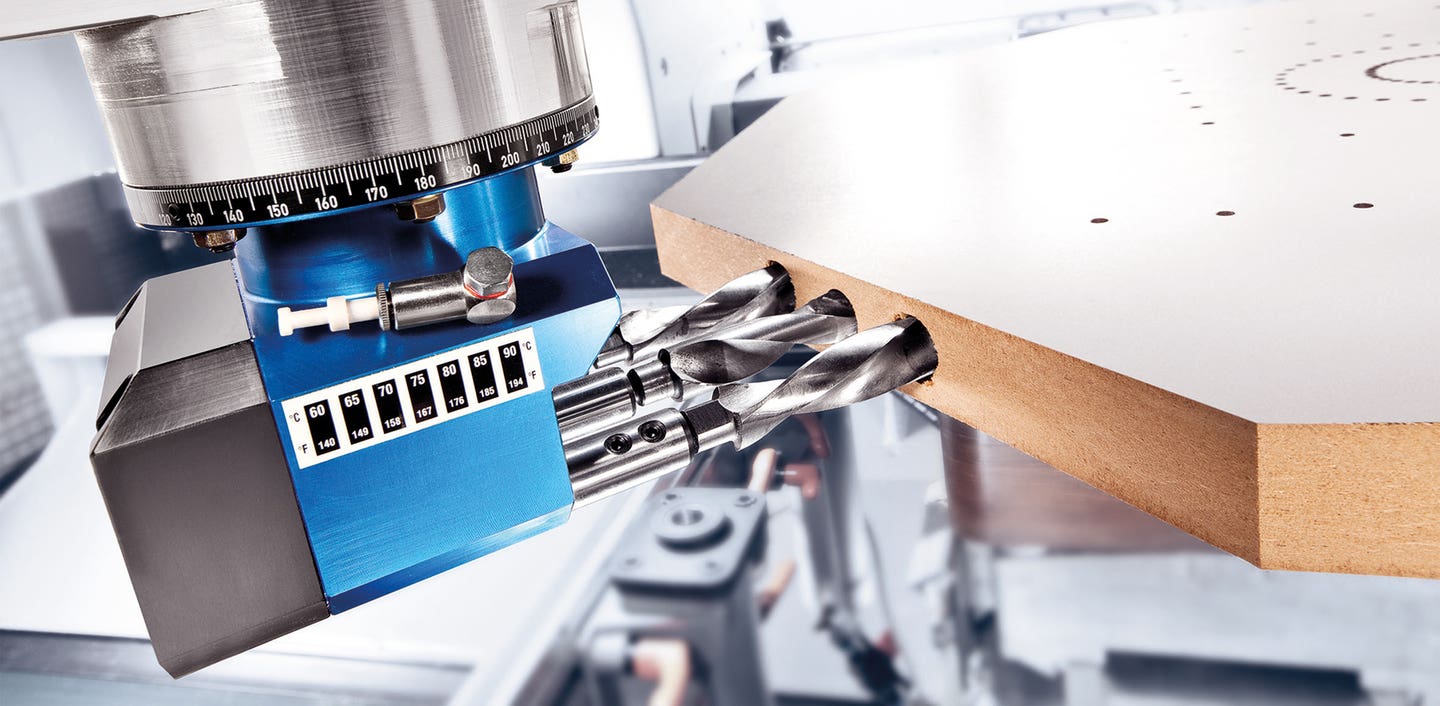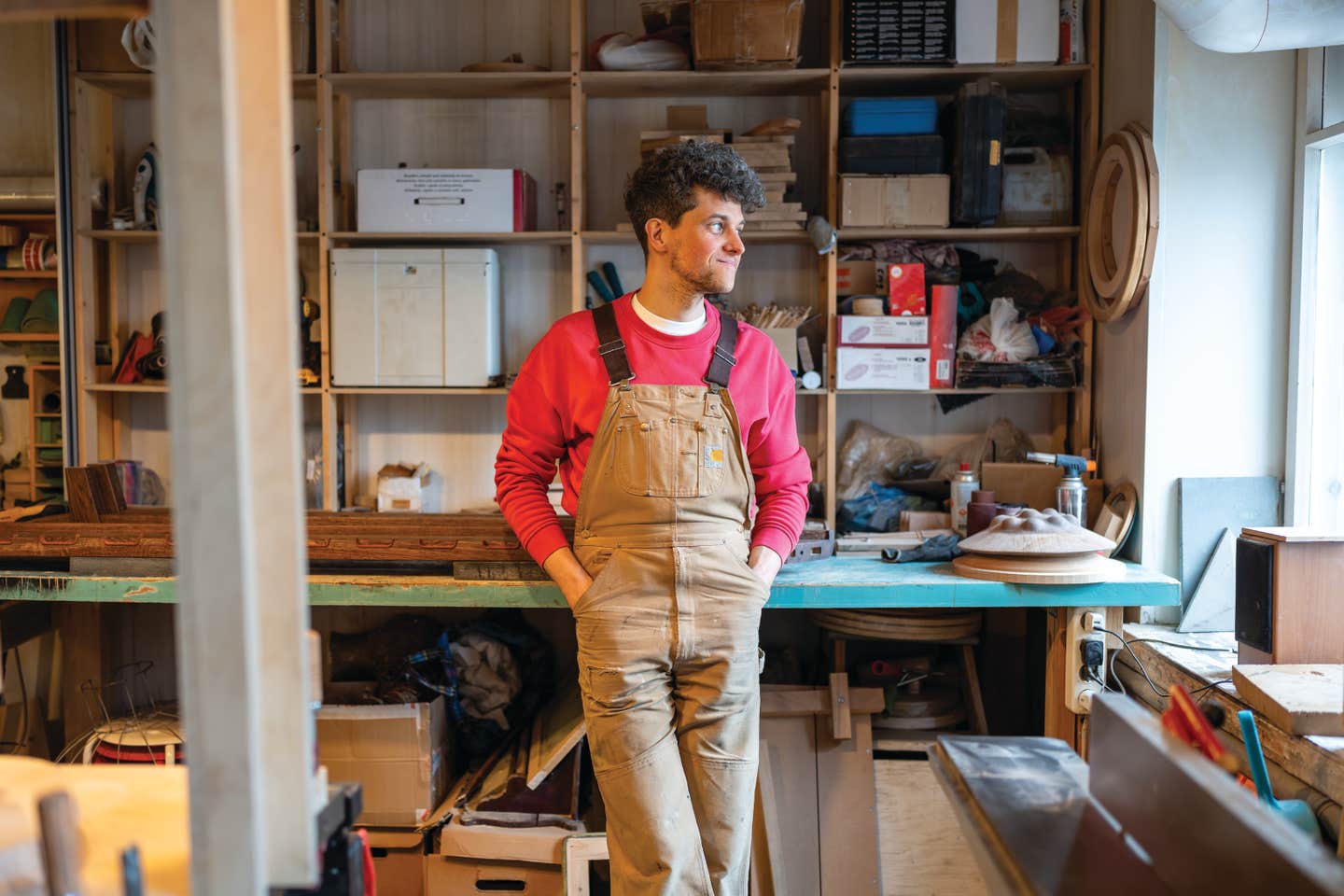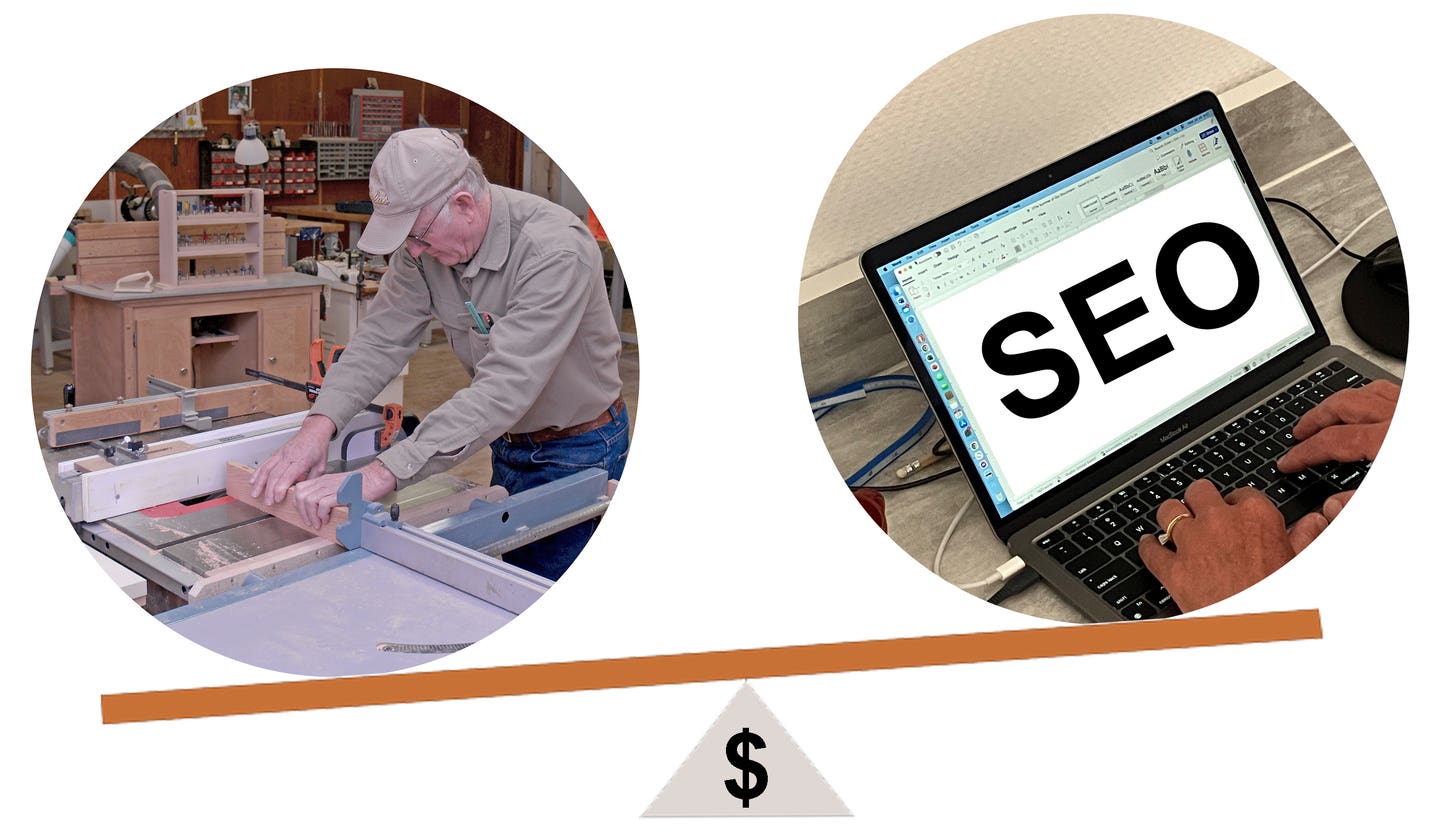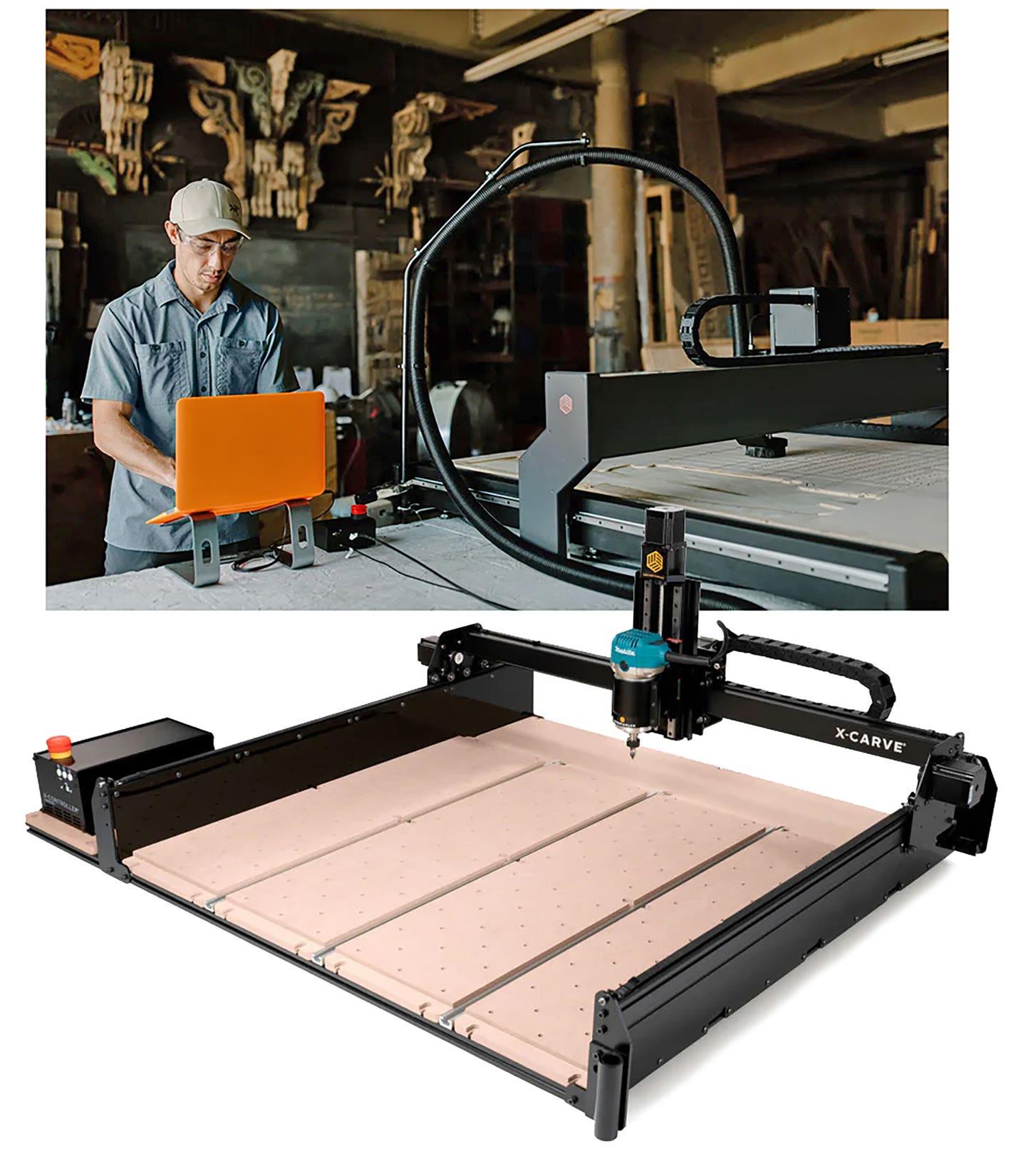Big surprises in small spaces
Multipurpose and combination machines have their pros and cons, but they are certainly space savers.
I bought a brand new Shopsmith back in 1991 and the first project that I built was a rocking horse from plans supplied with the machine. I used its bandsaw, horizontal boring function, table saw and drill press to tame that mustang. My 3-year-old son was thrilled with the results.
How time flies. That little boy drove past my woodshop today at the wheel of a semi with a backhoe in tow. The horse has survived him and his children, plus more than its share of adults acting like children, and it’s still with us.
The Shopsmith, however, is long gone. It has been replaced by an array of larger, stand-alone machines that have built a lot of kitchen cabinets and art furniture over the years. What I remember best about that multipurpose machine is that I could operate it in a small, single stall garage. It had a great variable-speed drill press but thinking about the table saw still gives me shivers. One had to tilt the whole table to make a beveled cut, and it lacked depth to support stock. However, it could be transformed into a 12” disc sander, and I sure got some good mileage out of that. As a woodturner, I gave the lathe low marks, but it would have been fairly adequate for occasional parts turning between centers in, say, a furniture repair shop.
There’s an old joke about the woodshop being so small that you had to step outside to change your mind. It just doesn’t look like an occupation that can be pursued in a small space, and in my case that was true. Building cabinets was not really feasible in that little garage. My current shop is about 3,000 sq. ft., and still bursting at the seams.
So, what do you do if you don’t have a lot of space?
One solution is to switch to multipurpose or combination machines that can perform the work of two or more stand-alone pieces of equipment and do so in less space. They’ve been popular in Europe for a long time, and now they’re really starting to catch on in North America. That’s because the quality has skyrocketed over the past few years, and the engineering has become very smart, too. Today, these are professional-grade machines that can run all day long, deliver precise results, and bear some very familiar brand names.
Buying new machines is always a little nerve wracking and trusting more than one shop function to a single piece of equipment requires some serious thought. Following are general observations about multipurpose machinery, both pro and con, and then we’ll wrap up with a quick survey of some of the options available.
Broad concerns
The first thing to look at is whether a combination machine actually makes money sense. This is true for serious hobbyists as much as it is for small shop professionals. A high-quality machine can be quite expensive. So, how does it rack up against separate, dedicated machines? Well, the biggest challenge here is to compare apples to apples. We’re not just considering the bare bones price tags on the machines. There’s the electrician (need 3-phase or some new 220-volt lines run?), new dust collection hook-ups, optional upgrades that allow you to use the machine in a specific way, even a new size of circular saw blade. Do you already own some machines whose function will be duplicated? Are you buying new or used? What about service and warranty – is the manufacturer even still in business? Are there freight charges, financing fees, interest to pay, a higher electric bill? How about the cost of downtime during the transition from existing equipment to the replacement, and the learning curve? Each of these sounds small but add them together and they may amount to some surprises.
The next reason one might consider a combination machine is the obvious one, space. Can the machine be located near a wall, or does it need clearance all round? What’s the feed footage – how much room do you need in front for feeding and behind for unloading? Do you need storage for parts that aren’t being used by the current function, such as guards, auxiliary tables or fences? If you have anything but a concrete floor, can it handle the weight? Many of today’s multifunction machines weigh more than half a ton. If there’s an optional mobility kit, consider buying it because they can be an absolute bear to move. That’s surprising, considering that most of them can pass through a standard doorway. However, the upside here is that all that mass minimizes vibration. A lot of the extra weight is in the motors. These are not household current machines. The combination (2-in-1) machines such as jointer/planer or saw/shaper usually share a motor, but the multipurpose (3-, 4- or even 5-in-1) machines often require separate motors for the table saw, jointer, planer, shaper and sometimes an optional horizontal mortiser, too.
The next big concern is that whole conversation about changeovers. This is a very real concern, because it bucks one of the basic tenets of great woodworking, repeatability. If you set up a machine and make several parts and then have to tear down your setup to perform a new function, you’re never going to be able to reset the machine exactly the same way it was. You’ll get close, and most of the time that’ll be good enough. But not always. Not if you’re working with veneers, or misbehaving hardwoods. Not if the joinery is all visible and on show. Good enough won’t always be good enough.
After repeatability, the next concern is downtime. Here, almost all of the new machines shine. They can be switched from one function to another in minutes, and sometimes mere seconds. But the key is not to buy the machine with the fastest changeovers, but rather to examine the way you work. Intelligent planning is essential. Figure out jobs so there are as few changeovers as possible. Do all of one process at the same time, before switching to the next.
North American woodworkers aren’t all that used to sliding tables. Sure, we’ve used them on table saws in big shops, but most combination and multipurpose machines use them as a routine solution for processing stock. Because the machine is smaller, it makes more sense to guide the work. This way of machining stock is an absolute joy, once you get used to it. Other small perks include much tighter blade inserts on European machines; it’s like working with a zero clearance insert all day long. Riving knives are pretty much standard, and many machines have switchable fences for guiding low or high material. The one big downside on many of these machines is that they don’t accommodate stacking dado sets or molding heads. The arbors are purposely short, as a safety feature.
Many of the European saw manufacturers are now introducing the next generation of finger-saving technology, which doesn’t require skin to actually touch the blade and doesn’t have an expensive brake kit to replace when it’s triggered. Before buying, ask your salesperson if this is currently available, and if not is it imminent. If you get two negative answers, then ask if you’ll be able to upgrade your new machine when this technology is introduced, as it surely will be.
Resources
Listed alphabetically below are several of the most popular multifunction or combination woodworking machines, along with their website URLs to facilitate further research.
Shown on its website at $3,400 plus shipping, the British woodworking chain Axminster Tools & Machinery (axminstertools.com) offers the AC250CM, a four-function combination machine that performs sawing, spindle molding, surface planing and thicknessing tasks.
Baileigh Industrial (baileigh.com) has two combination jointer/planers in its catalog. The JP1250 ($3,995) has a 12”-wide knife and a 59” table length, while the much larger JP-1898-NC is an 18”-wide, 98”-long 7.5-hp machine ($11,546.50). Both have spiral cutterheads.
Casadei Busellato (casadeibusellato.com) carries four Italian built combination machines and one multifunction machine. The latter is available in two model sizes, the C 30 C and the C 41 C. It includes a jointer, thickness planer, saw and spindle molder. Three of the combination machines are jointer/planers and one, the TS 35 ES, is a table saw/molder.
DM Italia (dmitaliasrl.com) is located just north of Milan, Italy and having a machine shipped to the U.S. may be a challenge. However, the catalog includes several industrial duty split-combination machines for high through-rates, and a baker’s dozen of smaller machines listed under Woodworking Combination Machines on the website.
Headquarters for the Felder Group USA (felder-group.com/en-us) are in New Castle, Del. and the company also has showrooms in Texas, California and Colorado. Among its five-function machines (planing, thicknessing, molding, cutting and if required mortising) are the Felder CF 741 and CF 531, plus the Hammer C3 41 and CS 31. The company also offers a large selection of highest quality jointer/planer combination machines running the gamut from 10” to 24-3/4” wide.
G.S. Paik (gspaik.com) is an Indian manufacturer located in the Punjab that offers six or seven really interesting multipurpose machines, including at least one with a band saw.
Grizzly Industrial (grizzly.com) offers two versions of its G0634 planer/jointer, the XP ($2,850) and Z ($2,995) models. Both are 12” and have spiral cutterheads. The XP has an end-mounted fence, so it can be located close to a wall.
Haoda Machine is a Chinese manufacturer that has launched a U.S. website (hdwoodmachine.com). The company make the five-function HD400, which includes a 15-3/4” jointer/planer plus a mortiser, table saw and shaper.
The Minimax brand from SCM North America (scmgroup.com) is familiar to most professional woodworkers. The company has locations in Georgia, California and North Carolina, and the catalog offers a huge selection of multipurpose and combination machines. There are four jointer/planers running from the 12” fs30c to the 16” fs41es; six universal combination machines (saw/molder); and two sliding table saw/shaper machines, the st 5es and st 4e.
Robland (robland.com) is located in Bruges, Belgium and imported by Martin Woodworking Machines (martin-usa.com). The catalog includes six 4-to-6 operation multipurpose machines, and six 2-to-3 operation combined machines.
Rojek USA Woodworking Machinery (rojekusa.com) can be contacted through Tech Mark in Little Rock, Ark. The company has three 5-in-1 combination machines, two saw/shaper combination machines and three planer/jointer machines.
RSWOOD – CMC (cmcwood.com/en) is an Italian company that offers three 5-in-1 machines, the Kombi 300, 410 and 500.
Scheppach (scheppach.com) is a German manufacturer that makes seven jointer/planer models.
Shopsmith (shopsmith.com) is still going strong after 67 years. The current iteration, the Mark 7, has a 1-1/8-hp household current motor and includes a 10” table saw, a 16.5” x 34” lathe, a 12” disc sander, a 16.5” drill press, a router and shaper, and a horizontal boring setup. The machine has a 2’ x 6’ footprint.
Woodmaster Tools (woodmastertools.com) offers 12”, 21” and 25” machines that the company says can switch from planing to molding, sanding or sawing in less than five minutes with an exclusive Morse taper self-centering system. The machines have been around for 40 years and are very customizable. They come with standard knives or carbide inserts and prices start at $2,459.
This article originally appeared in the July 2020 issue.







